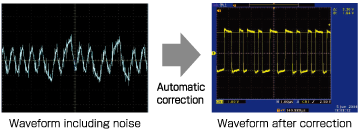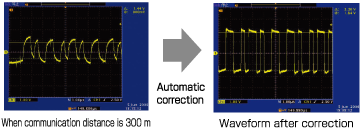Common features of HLS and CUnet
Control network to enable all advanced functions simultaneously
Common features of HLS and CUnet
Four high efficiency is realized simultaneously!

|
Step Technica’s network can robustly and quickly control small data (bit data) including I/O that is required to control factory automation devices. Protocol specification designed not for transmission rate but for substantial communication rate of each slave allows communication at the maximum speed of 15 µs per node although it is RS485-base network. |

|
Since Step Technica’s network IC has built-in communication protocol, customers do not need to develop communication software. User CPU has no communication burden because network ICs in this network automatically communicate each other. |

|
Step Technica’s IC is always correcting the waveform automatically for received data. They also determine if the corrected data comply with the specified format. This will help to ensure the received data as "100% correct data" without data corruption. |
High noise immunity
Even if the transmission waveform is broken due to being affected by various noises from the environment. "Automatic Waveform Correction Function" corrects the waveform, realizing the high noise immunity.

Long distance
Even if the transmission waveform is broken due to long-distance communication (as shown in the diagram). "Automatic Waveform Correction Function" corrects the waveform, realizing the long-distance communication.


|
Step Technica’s network adopts constant-cycle scan method so that communication rate does not change at all. The turnaround time given to each terminal on the network is fixed. Therefore, the turnaround time for a scan depends on the number of terminals on the network. If a communication error occurs, the error data is discarded and retry is not executed. Thanks to the built-in ultrahigh-speed communication and automatic waveform correction functions, the correct data can be obtained at the next scan without retry. |

|
